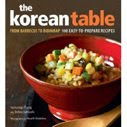 Photo By Debra Samuels
Photo By Debra SamuelsGlobe Correspondent / January 21, 2009
This Chinese chicken hot pot combines the heartiness of a casserole with a light, warming chicken broth. Slices of fresh ginger root and scallions are two aromatics that signal that this is not Grammy Greenberg's Jewish penicillin. But like hers and other pots of chicken soup, this begins with a whole bird. Here, it's cut up and browned first, which cuts the simmering time to 20 minutes. Add strands of transparent noodles, which float like threads among the pieces of chicken. Soy sauce seasons the broth, along with fresh shiitake mushrooms (or use soaked dried shiitakes and add the soaking liquid to the broth). Serve bowls of steamed white or brown rice beside the brimming bowls of soup. You'll put a smile on any grandmother's face.
Recipe
2 ounces transparent noodles
2 tablespoons canola oil
3 thick slices fresh ginger
3 scallions 2 halved and thinly sliced
1 small onion thinlt sliced
1 frying chicken, cut up ( cut breasts cut into thirds)
1 tablespoon soy sauce
Salt and pepper to taste
3 1/2 cups water
10 fresh shiitake mushrooms, halved
1 small head Chinese (Napa) cabbage, cut into quarters, with stem intact
1. In a medium bowl, combine the noodles and cold water to cover; set aside for 30 minutes.
2. In a large flameproof casserole over high heat, heat the oil for 30 seconds. Add the ginger, scallions, and onion. Cook, stirring constantly, for 1 minute.
3. Add the chicken pieces and sprinkle with salt and pepper. Brown on both sides for 2 minutes.
4. Sprinkle the chicken with soy sauce and continue cooking
for 1 minute. Transfer the
chicken, onion mixture, and juices in the pan to a bowl. Wipe out the pan.
5. Add the water, mushrooms, and cabbage pieces. Nestle the chicken and onion mixture among the vegetables. Tip the juices from the bowl into the pan. Bring to a boil, lower the heat, and cover the pan. Simmer for 20 minutes.
6. Drain the noodles and add to the soup. Cook for 5 minutes more. Taste for seasoning and add more salt or soy sauce, if you like. Return the soup to a boil. Cook for 1 minute.
7. In four large bowls, place a quarter of the cabbage, some of the chicken pieces, and mushrooms. Ladle the broth into the bowls and set the noodles on top. Sprinkle with scallions and more pepper.
Adapted from "The Key to Chinese Cooking."
2 ounces transparent noodles
2 tablespoons canola oil
3 thick slices fresh ginger
3 scallions 2 halved and thinly sliced
1 small onion thinlt sliced
1 frying chicken, cut up ( cut breasts cut into thirds)
1 tablespoon soy sauce
Salt and pepper to taste
3 1/2 cups water
10 fresh shiitake mushrooms, halved
1 small head Chinese (Napa) cabbage, cut into quarters, with stem intact
1. In a medium bowl, combine the noodles and cold water to cover; set aside for 30 minutes.
2. In a large flameproof casserole over high heat, heat the oil for 30 seconds. Add the ginger, scallions, and onion. Cook, stirring constantly, for 1 minute.
3. Add the chicken pieces and sprinkle with salt and pepper. Brown on both sides for 2 minutes.
4. Sprinkle the chicken with soy sauce and continue cooking
for 1 minute. Transfer the
chicken, onion mixture, and juices in the pan to a bowl. Wipe out the pan.
5. Add the water, mushrooms, and cabbage pieces. Nestle the chicken and onion mixture among the vegetables. Tip the juices from the bowl into the pan. Bring to a boil, lower the heat, and cover the pan. Simmer for 20 minutes.
6. Drain the noodles and add to the soup. Cook for 5 minutes more. Taste for seasoning and add more salt or soy sauce, if you like. Return the soup to a boil. Cook for 1 minute.
7. In four large bowls, place a quarter of the cabbage, some of the chicken pieces, and mushrooms. Ladle the broth into the bowls and set the noodles on top. Sprinkle with scallions and more pepper.
Adapted from "The Key to Chinese Cooking."





